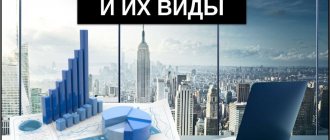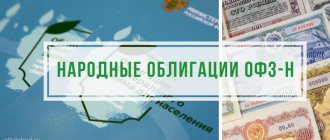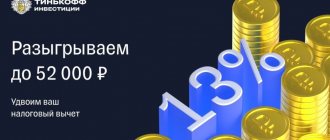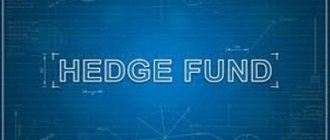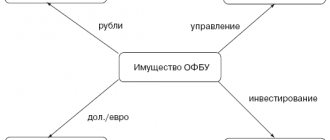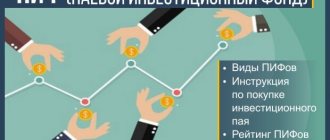When choosing a company to invest in, the vast majority of private investors pay attention to the size of the company. Logically, this is understandable: an inefficient company is unlikely to grow to a respectable size. However, few people know what NAV is, although they regularly use this parameter when assessing the attractiveness of securities.
Dynamics of share value and NAV
To make the operating principle of mutual funds clearer, I will consider an example: you buy a share (share in the Balanced investment fund) for 1000 rubles. If the value of the deposit increases, you will make a profit when you sell the share.
And vice versa: a fall in the price of a share will lead to losses. The value of a share is directly related to the net asset value. NAV is calculated as the difference between a company's assets and the amount of its liabilities.
The dynamics of the share price are shown below.
The chart shows a smooth growth without sharp drawdowns, which indicates a moderate risk of the mutual fund.
The positive dynamics are due to the increase in NAV from RUB 1.4 billion. up to 10.7 billion rubles. in 3 years. To evaluate the management efficiency of the Balanced mutual fund, a benchmark is used. For this mutual fund, Sberbank uses a basket of indices (50% IMOEX, 50% IFX-CBonds).
The graph shows that the management team copes with its task 100%: the dynamics of the value of the share and the index are almost identical.
NAV of investment funds
In mutual funds, things are a little more complicated. Mutual funds are divided into actively managed and passively managed, for example, following the MICEX index.
Mutual funds are also divided into closed, interval, or open, they all differ in the periods in which investments can be made and withdrawn.
If the mutual fund is open, the share is not traded on the stock exchange, since the management company itself handles settlements with investors, it issues additional shares, or, conversely, reduces their number. The actions of investors will not affect the value of the share.
If the mutual fund is closed, investors trade shares among themselves, and their total number does not change. It turns out that investors in open mutual funds can withdraw their money at any time. Typically, most investors withdraw money during a crisis, which creates a big problem for the manager. As a result, after such a massive withdrawal of investors, the Fund is left with a small amount of assets. Consequently, the fund’s NAV also decreases, and technical difficulties begin: there is not enough money to rent offices and maintain analysts. The fund is preparing for liquidation. If the mutual fund is closed, the manager acts independently of investors.
To figure out what the NAV of Russian mutual funds is, you can go to the investfunds.ru resource and look at the profiles of the mutual fund market.
The statistics are as follows: the NAV of funds that include both bonds and stocks is almost 2 times higher than the NAV of funds that contain only stocks. The highest rates are for real estate mutual funds and rental mutual funds, and in accordance with legal requirements they can only be closed.
The total amount of money in mutual fund accounts is 648.5 billion rubles.
Also, data on mutual funds and NAV can be viewed on the nlu.ru resource. It is interesting to note that the largest bond fund on this resource is 20 billion rubles, and the largest stock fund is only 5 billion rubles.
The resource shows that the NAV of Russian mutual funds has increased more than 215 times over 15 years. The decline in indicators was noticeable during the crisis; NAV then fell by half, but now it is at its maximum level. Over the same 15 years, the MICEX index grew only 7.3 times, if dividends are not taken into account in the calculation.
Despite the difference in absolute indicators, the growth graphs of the MICEX index and NAV are almost identical in structure.
Advantages and disadvantages
One of the positive aspects of the Balanced Mutual Fund is the simplicity of investing: just go to your Sberbank personal account, click the “Buy online” button, and you become the owner of a share. Such investments do not require specific skills and knowledge, as with independent investing in shares.
For 2022, the mutual fund showed a return of 21.41%. Taking into account the commission (up to 6.4%), the investor receives 25% less profit indicated on the chart. Such investments are not practical for long periods.
But a mutual fund cannot guarantee future profits based on past results. Investing in a mutual fund involves risk. You are required to pay a commission even if you make a loss, which can increase your losses even further.
NAV of foreign funds, NAV
In addition to mutual funds, ETFs, the so-called exchange-traded funds, are widely represented on the market today, which are today the most interesting instrument for investors of different sizes and classes. For them, a complete analogue of NAV is Net Assets Value, or NAV, to express the term in an abbreviation.
The very first exchange-traded fund launched in 1993 and tracks the S&P500 index. The name of the fund is SPY.
Over time, SPY shares. have grown significantly, and along with them, net assets have grown; the NAV of the fund today amounts to $254 billion.
The NAV value of the largest fund VTSAX is even larger – $635 billion. These are huge amounts, poorly comparable to Russian mutual funds. Taking into account today's exchange rates, the entire Russian mutual fund market is smaller than the VTSAX fund alone. However, it does not follow from this that the yield of Russian securities should be less than that of world or, specifically, securities of US companies. But the engine of growth, of course, is and remains the American market.
How to invest
To purchase a share you need:
- go to the official website of Sberbank Asset Management;
- open the “Mutual Funds” section. In the “Open-end mixed investment fund” category, click on “Balanced”;
- in the tab that opens, click on “Buy online”;
- indicate the investment amount, personal data, confirm payment.
Within a week after payment, you become a shareholder of the Sberbank Balanced mutual investment fund.
Feedback from investors
In general, the conditions for investing in the Balanced mutual fund are acceptable. To avoid losing your savings, you must carefully read the terms of the contract. One of the investors in Sberbank mutual funds writes about this.
Another investor writes that the first investment was successfully withdrawn, but the balance of money in the account was withdrawn with a strong delay: it would not be possible to withdraw money on time.
On my own behalf, I would add that before investing money, you must consult with the manager of the investment fund, carefully study the documentation, then such situations will not happen.
How is NAV calculated?
The actual indicator for all assets and their objective assessment are taken into account. If the NAV is determined on each trading day, the last 10 transactions made on that day for all instruments traded on the exchange are taken into account.
Let's say fewer transactions were made, then only those trades where there were a sufficient number of transactions are taken into account. The data is summed up, and then the amount of physical costs is subtracted from the sum.
If NAVs that do not participate in trading on the stock exchange are assessed, an independent calculation is carried out in accordance with the provisions on determining net assets (Federal Assembly Order No. 05-21/pz-n). The NAV balance is also calculated for assets that are poorly liquid. Within the framework of this order, the mutual fund itself can establish its own rules for the assessment procedure.
Newbie
A novice investor should familiarize himself with the intricacies of investing so as not to lose his savings. However, there is no better way to learn something than to try it. Now I will tell you what a beginner should pay attention to.
What is a mutual fund and why is it needed?
You have free money that you want to invest. The management company (MC) invests your funds in assets, for which it takes a certain percentage. An investment mutual fund may make a profit (if the sale price of the purchased unit is higher than the purchase price) or a loss (the purchase price is higher than the sale price).
Advantages and disadvantages of mutual funds
The need for knowledge and skills makes investing out of reach for most people. The use of trust management allows beginning investors to increase their savings.
Real inflation is higher than the official one, so a bank deposit does not save money from depreciation. The high income of a “Balanced” mutual fund allows you not only to preserve, but also to increase your savings.
The share has high liquidity: you can get money back almost immediately. Early withdrawal is possible.
The negative side of mutual funds is risk. Even conservative management strategies can bring losses to the investor. To generate above-average returns, a mutual fund must return at least 20% annually to cover fees.
Risks
You need to approach investing in Sberbank mutual funds wisely. You should not invest borrowed funds in the Balanced investment fund, mortgage real estate or take out loans, as there is a risk of losses.
What affects the risk level of a mutual fund
Profit in the past does not guarantee that the Balanced Mutual Fund will receive income in the future. To insure your investment, you need to consider the following factors:
- the cost of a unit of a “Balanced” Mutual Fund is directly dependent on the NAV. It is necessary to take into account the state of the economy and the growth potential of the industry;
- The age of the management company is an indicator of the reliability of the organization. There are young, highly profitable projects that promise a 100% increase in profit per year. After receiving the money, the project is closed and the money is not returned. The Sberbank team has many years of experience and is recognized as the best in the field of investment capital management;
- The main factor influencing the degree of risk is the aggressiveness of the strategy. The higher it is, the more profitable the investment instrument, but with the profitability the risk also increases. Conservative strategies allow you to avoid severe drawdowns, but the profit percentage is much lower.
What can be done to reduce risks
Diversify. Dividing investments into several assets (for example, using the “Balanced” fund and the Ilya Muromets mutual fund) reduces risk and minimizes potential losses: a loss-making investment is offset by profits from another.
NAV and capitalization
These two concepts are close in meaning, but have significant differences. Market capitalization is the sum of all shares multiplied by the value of an individual share. The cost depends on several reasons: not only on the development of the company’s business itself, but also on how this business is assessed by investors, and their assessments are usually subjective. If the market is up and the company's reporting data is quite favorable, investors often revalue the stock, and the total capitalization begins to exceed NAV. If there is a crisis in the market, or the company’s report contains negative aspects, investors begin to worry, or even panic, as a result, capitalization falls below NAV due to undervaluation of shares. Sometimes such a discrepancy turns out to be significant, in which case the moment arises for a profitable purchase of shares. An interesting example: at the end of 2007, the market capitalization of many Russian companies exceeded NAV almost three times, and less than a year later it amounted to only about 60% of this figure.
Investors who purchased shares of large Russian companies managed to double their capital within one year. A similar situation occurred with US stocks after the crisis.
Buying shares with a low capitalization compared to the NAV is a profitable and popular investment strategy that has proven itself not only in times of crisis. The reason for its popularity is its ease of use. The NAV is easily found in the company's reporting documents. The reporting also contains the total number of shares and their value, so you can calculate capitalization without any difficulties. After this, you can find an undervalued share of a large, proven company, and sell it when the capitalization is almost equal to the NAV. For several decades, this strategy brought clear benefits and was calculated according to the S&P500 index, but recently such a difference has become minimal.
